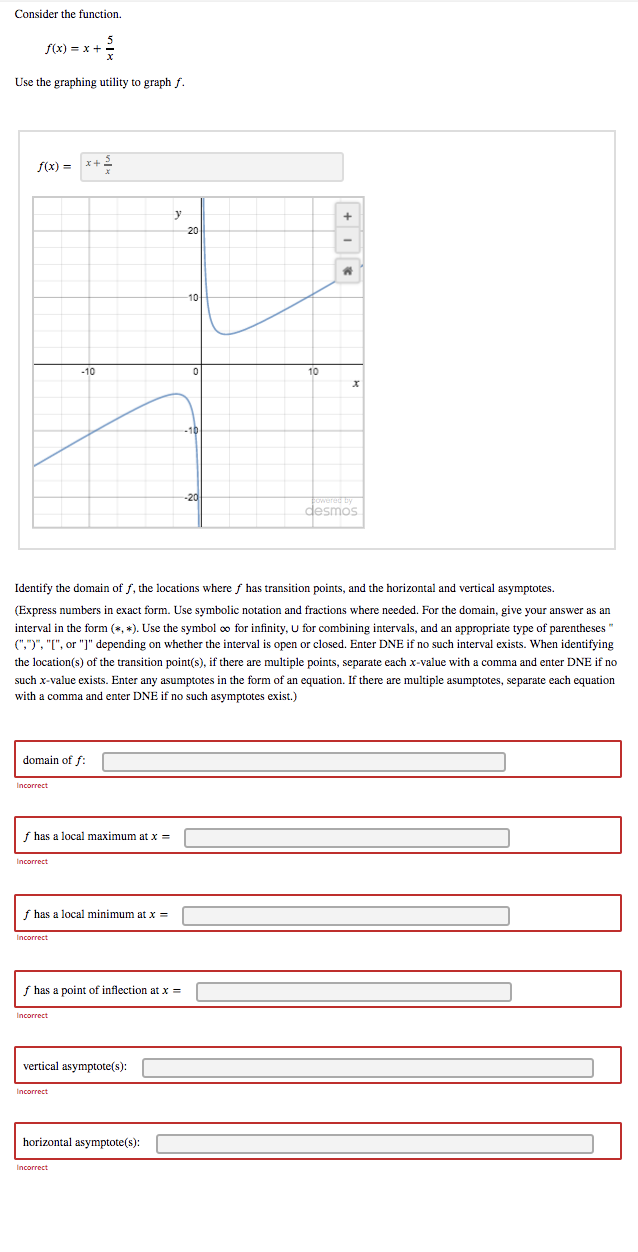Algebra & Trigonometry with Analytic Geometry
13th Edition
ISBN:9781133382119
Author:Swokowski
Publisher:Swokowski
Chapter10: Sequences, Series, And Probability
Section10.6: Permutations
Problem 47E
Related questions
Question

Transcribed Image Text:Consider the function.
f(x) = x +
Use the graphing utility to graph f.
f(x) = x+2
y
20
-10
10
desmos
Identify the domain of f, the locations where f has transition points, and the horizontal and vertical asymptotes.
(Express numbers in exact form. Use symbolic notation and fractions where needed. For the domain, give your answer as an
interval in the form (*, *). Use the symbol o for infinity, U for combining intervals, and an appropriate type of parentheses"
(",")", "[", or "J" depending on whether the interval is open or closed. Enter DNE if no such interval exists. When identifying
the location(s) of the transition point(s), if there are multiple points, separate each x-value with a comma and enter DNE if no
such x-value exists. Enter any asumptotes in the form of an equation. If there are multiple asumptotes, separate each equation
with a comma and enter DNE if no such asymptotes exist.)
domain of f:
Incorrect
f has a local maximum at x =
f has a local minimum at x =
Incorrect
f has a point of inflection at x =
Incorrect
vertical asymptote(s):
Incorrect
horizontal asymptote(s):
Incorrect
Expert Solution
This question has been solved!
Explore an expertly crafted, step-by-step solution for a thorough understanding of key concepts.
Step by step
Solved in 2 steps with 1 images

Knowledge Booster
Learn more about
Need a deep-dive on the concept behind this application? Look no further. Learn more about this topic, calculus and related others by exploring similar questions and additional content below.Recommended textbooks for you

Algebra & Trigonometry with Analytic Geometry
Algebra
ISBN:
9781133382119
Author:
Swokowski
Publisher:
Cengage

Algebra & Trigonometry with Analytic Geometry
Algebra
ISBN:
9781133382119
Author:
Swokowski
Publisher:
Cengage